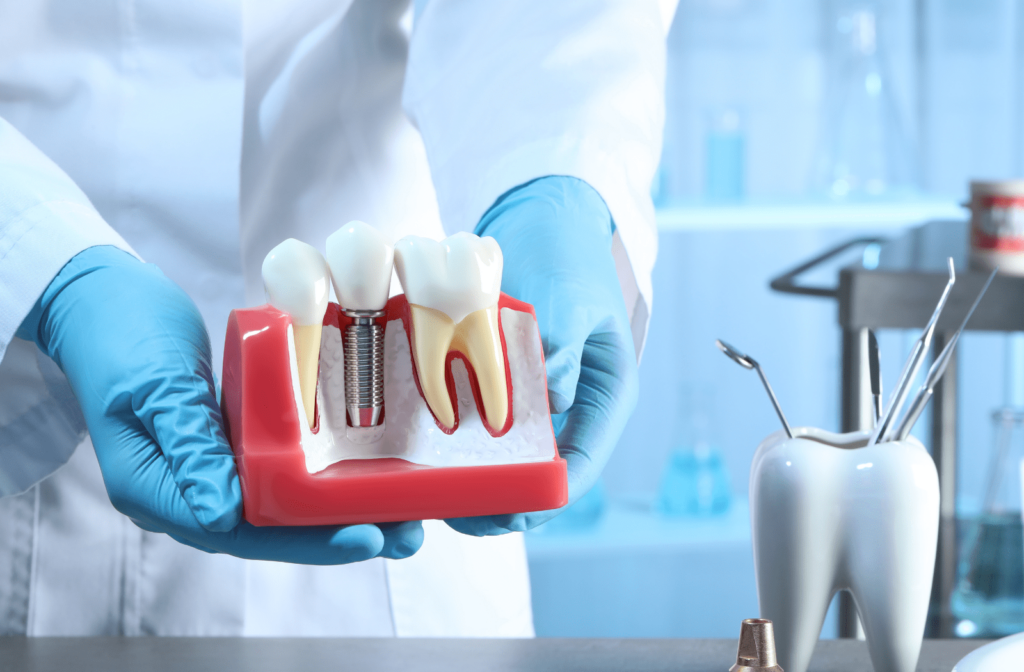To replace teeth that have been lost due to injury, illness, or decay, dental implants are a commonly used procedure. However, for dental implants to function properly, you need to have enough bone to hold an implant.
This causes many people to question whether they can still get dental implants if they have significant bone loss. If this is something you’re questioning yourself, you’ll be happy to know it’s possible. There are just a few extra steps needed to make it happen, starting with a comprehensive dental exam.
What to Expect During Dental Implant Surgery
Because dental implants require one or more surgical procedures, you must first go through a thorough evaluation to prepare for the procedure, which includes the following:
Thorough Dental Exam
A comprehensive dental exam provides your dentist with a complete picture of the condition of your teeth and jaw. Dental X-rays and 3D images, as well as models of your teeth and jaw, will be mapped out.
Medical History
Inform your doctor about any medical conditions you have, as well as any medications you’re taking, including prescription, over-the-counter, and herbal supplements.
Treatment Plan
This plan is tailored to your specific situation and considers factors such as the number of teeth that need to be replaced, as well as the condition of your jawbone and remaining teeth.
Removing the Damaged Tooth
Certain dental implant procedures allow for the extraction of damaged teeth and their immediate replacement with an implant. However, in most cases, a damaged tooth must be extracted and the area must heal properly before proceeding.
Bone Grafts
A bone graft is frequently (but not always) used to prepare the area after removing a patient’s natural tooth but before inserting an implant. These grafts encourage the formation of new bone, which strengthens the jawbone and aids in the proper integration of the implant with the bone.
Placing the Implant
During this stage, your dentist will use local anesthesia to numb your mouth. They may make an incision in your gum to expose the bone once the numbing has taken effect.
After making the incision, a drill will be used to create space in the bone for the implant screw. The implant is then placed, and a covering, which may or may not protrude from the gums. Implants are about as painful as a regular filling.
Prepping for the Dental Crown
The implant and bone eventually heal and fuse after 3 – 6 months. After this, you will move on to the next stage of the procedure.
Your dentist will re-examine the implant, verifying that this integration has happened, and an impression will then be taken to fit a dental crown.
Placing the Dental Crown
The crown(s) will then either be screwed on or cemented to the implant. During the final step, you will be given your new crown.
Can I Get a Dental Implant with Bone Loss?
Many people suffer from a type of bone loss that occurs beneath the gum line. Periodontal disease is often to blame. Those who have this type of bone loss are all too aware of the serious consequences it has on their health and quality of life.
Yes, it’s possible to get dental implants even if you have bone loss. In some cases, there may still be enough bone mass to place the implants, or a shorter implant post may work for you.
In some cases, a bone graft will be necessary to ensure enough bone mass to support the implant. Your oral surgeon will determine the best treatment strategy for you after a thorough examination.
How Does a Bone Graft Work?
When a bone graft is needed, your dentist will lift your gums after administering a local anesthetic to numb the pain. Following that, a piece of natural or synthetic bone will be placed in the area where the implants will need more support.
The bone will begin to fuse together and may even generate new bone in the area over a few months, usually at least four. After the graft has healed, you can proceed with your dental implant procedure with complete confidence in its durability and stability.
Talk to Your Dentist About Dental Implants
It’s essential that you consult with your dentist as soon as possible if you need a dental implant to replace a missing tooth, or perhaps several missing teeth, to reduce the risks of bone loss.
The longer you put off taking care of the issue, the more likely you will start losing bone around the missing tooth. While it is not always necessary to perform a bone graft to place a dental implant, starting the process as soon as possible will guarantee that you are given the best options for restoring and replacing the missing teeth.



